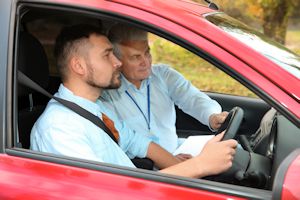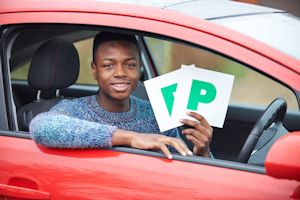 Welcome to Monarch Driving School St Helens, your local driving school that is here to offer you the opportunity to learn to drive in a safe, comfortable and relaxed environment.
Welcome to Monarch Driving School St Helens, your local driving school that is here to offer you the opportunity to learn to drive in a safe, comfortable and relaxed environment.
Applying for a provisional driving licence
Your first step to learning to drive is to apply for a provisional driving licence. The cost is £34 and you will find all relevant information and application services at www.gov.uk/apply-first-provisional-driving-licence
Finding a driving instructor
Once you have received your provisional driving licence the next step is to find yourself a trusted and reliable driving instructor. Perhaps somebody has recommended Monarch Driving School to you or perhaps you have started researching driving school’s in St Helens and have stumbled across our website. Either way, it may be helpful for you to read the reviews about our driving school at www.monarchdrivingschool.freeindex.co.uk
Take a trial driving lesson
At Monarch Driving School we offer the first lesson as a trial driving lesson so that you can see that you are happy with your allocated driving instructor and tuition vehicle. If for any reason you aren’t satisfied then we will offer you as many trials as necessary with different members of our team until you are happy that you have found your perfect driving instructor. It is not advisable to block book driving lessons with any driving school unless you are certain that you are happy with your choice of driving instructor.
What is covered on practical driving lessons?
 Throughout the course of your driving lessons your driving instructor will cover all of the competencies as set out by the DVSA (Driver and Vehicle Standards Agency).
Throughout the course of your driving lessons your driving instructor will cover all of the competencies as set out by the DVSA (Driver and Vehicle Standards Agency).
The information below, provided by the DVSA, is the training syllabus that Monarch Driving School driving instructors are trained to teach in accordance with. Certain aspects of driver training are not included in the driving test but are still essential aspects of learning to drive.
All the competencies or topics broken down on these pages may require knowledge of particular legal responsibilities which need to be covered. For detailed information about this or any other area please refer to the source material listed below:
- Driving - the essential skills
- The Highway Code
- Know Your Traffic Signs
- Vehicle handbook
COCKPIT CHECKS
- DSSSM
- driving position
- head restraints
- seat belts
- doors
- gears and handbrake safety check
- mirrors
Underpinning knowledge
- order of adjustment
- best driving position
- mirror adjustment, including anti-dazzle
- variety of seat adjustments
SAFETY CHECKS
- POWER (petrol - oil - water - electrics - rubber)
Underpinning knowledge
- daily and weekly vehicle checks
- service intervals
- planning for journeys
- clear windscreens
CONTROLS & INSTRUMENTS
- accelerator, clutch and footbrake
- handbrake, steering, speedometer, horn, indicators and gears
- instrument panel warning lights
- wipers
- hazard, reversing, side, fog and headlights
- demister and heated windows
- manufacturer’s options
Underpinning knowledge
- the function of each
- the effects of incorrect use
- how to read and understand them
MOVING AWAY & STOPPING
- MSM and PSL
- observation and blind spots
- control and co-ordination
- on level and on gradient
- at angle and straight ahead
Underpinning knowledge
- co-ordination of accelerator, clutch and footbrake
- handbrake and steering
- where and when to look and what to look for
- suitable stopping places
- signals when necessary
SAFE POSITIONING
- normal driving
- lane discipline
- passing stationary vehicles and obstructions
- bends
Underpinning knowledge
- MSM and PSL
- other vehicle’s positioning (LGV, cyclists etc)
- wide and narrow roads
- one-way streets
MIRRORS - VISION & USE
- interior and exterior
- flat, concave and convex
Underpinning knowledge
- MSM and PSL
- when to use them
- why they should be used
- how to act on what is seen
- blind spots
- frequency of checks and why
SIGNALS
- by arm and by indicators
- brake, reversing and hazard lights
- by other road users and traffic controllers
Underpinning knowledge
- why signals are necessary
- when and how to signal
- unnecessary signals
ANTICIPATION & PLANNING
- risk awareness in connection with: drivers, cyclists, motorcyclists, pedestrians, animals, road works, emergency vehicles and any other road users
Underpinning knowledge
- MSM and PSL
- hazard perception
- visual warnings
- times and places of high risk
- weather conditions
- scanning and priorities
USE OF SPEED
- appropriate speed
- making progress
- hesitancy
Underpinning knowledge
- national speed limits
- restricted speed limits
- road and weather conditions
- traffic conditions
- pedestrian activity
- stopping distances
OTHER TRAFFIC
- meeting, crossing and overtaking
- one way and two way roads
- three-lane two-way roads
- major, minor and narrow roads
- dual carriageways
Underpinning knowledge
- MSM and PSL
- when and why to give way
- passing places and warning signs
- obstructions, parked vehicles...
- planning and anticipation
- how to act on what is seen
- motorways
JUNCTIONS
- T-junctions and Y-junctions
- crossroads and slip roads
- marked and unmarked junctions
- one-way streets
- urban, rural and dual carriageways
Underpinning knowledge
- MSM and PSL
- turning, entering and emerging
- advance warning signs and road markings
- zones of vision
- priorities
ROUNDABOUTS
- mini and major
- multiple and satellite
- traffic light controlled
- approaching and entering
- leaving and turning
- straight ahead
Underpinning knowledge
- MSM and PSL
- lane discipline
- correct position
- zones of vision
- observation
- priorities
PEDESTRIAN CROSSINGS
- controlled eg. pelican
- uncontrolled eg. zebra
- school crossing patrols
Underpinning knowledge
- MSM and PSL
- visual warnings
- speed of approach and overtaking
- times and places of high risk
- waiting pedestrians
- central refuges and split crossings
- weather conditions
- scanning
DUAL CARRIAGEWAYS
- urban, rural and clearways
Underpinning knowledge
- MSM and PSL
- speed limits
- lane discipline
- advance warning and information signs
- joining, leaving and turning
- breakdowns, hazard lights and triangles
- motorways
- road and weather conditions
TURNING THE VEHICLE AROUND
- flat and cambered roads
- wide and narrow roads
Underpinning knowledge
- safe, legal and convenient
- co-ordination of foot and hand controls
- steering (position and method)
- judgement and accuracy
- observation
- signal options
REVERSING
- left, right and straight
- flat and cambered roads
- square and radius corners
- wide and narrow roads
- on level and on gradient
Underpinning knowledge
- safe, convenient and legal
- co-ordination of foot and hand controls
- steering (position and method)
- judgement and accuracy
- observation
- signal options
PARKING
- In a bay and parallel
- on level and on gradient
Underpinning knowledge
- safe, legal and convenient
- co-ordination of foot and hand controls
- steering - position and method
- judgement and accuracy
- observation
- signal options
EMERGENCY STOP
- quick reaction
- control and skidding
Underpinning knowledge
- hazard perception
- clutch and brake co-ordination
- ABS
- front and rear wheel skid control
- defensive driving
- road and weather conditions
- moving away safely
DARKNESS
- fog, ice, snow, wind and rain
- urban and rural areas
- single and dual carriageways
Underpinning knowledge
- speed and stopping distances
- vehicle condition and characteristics
- visibility
- skidding and aquaplaning
- warning signs and signals
- use of lights, horn and hazard lights
- parking
WEATHER CONDITIONS
- fog, ice, snow, sun, wind and rain
- urban and rural areas
- single and dual carriageways
Underpinning knowledge
- speed and stopping distances
- vehicle condition and characteristics
- visibility
- skidding and aquaplaning
- warning signs and signals
- use of lights, horn and hazard lights
- parking
LEGAL RESPONSIBILITIES
- driver and vehicle requirements
Underpinning knowledge
- drink and drugs
- mobile communications
- tiredness and rest periods
- dealing with accidents
- licence requirements and accompanying drivers
- health and eyesight
- vehicle condition and registration
- tax, MOT and insurance
- traffic rules and regulations
ENVIRONMENTAL ISSUES
- noise and pollution
Underpinning knowledge
- driving styles and impact on environment
- green issues
- vehicle maintenance
- disposal of vehicle waste
- health and safety of drivers and others
PASSENGERS & CARRYING LOADS
- drivers' responsibilities regarding adults, children, babies and animals
- carrying loads on and in the vehicle
- loading trailers and cycle racks
Underpinning knowledge
- use of seatbelts
- doors, guards and restraints
- airbags and seating
- load and luggage stowage
- weight distribution
SECURITY
- vehicle, contents and personal security
- when parking, driving at night and daytime
- in event of breakdown and accident
Underpinning knowledge
- personal and vehicle security systems
- safe places for parking
- minimising opportunities for theft of and from vehicle, and attack
